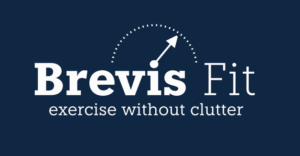Introduction
Exercise is in principle a stressful event. This in turn means, that there is a limit to how Exercise we can tolerate. The concept that explains how much Exercise we can tolerate is Exercise recovery. Stress and recovery are however not the whole picture of the hermetic effect of Exercise. We first need a stressful event, Exercise. Next, we need to recover from it, through rest. And finally, we need to grow new adaptation that makes us better than ever before. This is called supercompensation. And in this blog post, we will look into these three concepts, explain their interdependency.
Rhythmic Biological activities
Throughout our day we do many activities, from biologically driven to socially inspired. Biologically driven events are triggered, maintained, and managed through our innate biological feedback loops, incorporating a vast array of chemical signaling that transmit information about the state of our metabolism and initiate appropriate behavior. Biological signaling and feedback loops are usually integrated and scheduled based on the signaling of other systems and feedback loops in our bodies [1].
On the other hand, socially inspired activities, such as work, events, and meetings are scheduled, triggered, and managed by our environment. Because of that, we try to fit them in a less flexible daily and weekly schedule, in order to accommodate specific social and cultural norms.
An example of the interactive nature between biological and social events would be that on a day after a hefty amount of physical labor, we feel much more tired and sleepy throughout the day. While we spent the same amount of time sleeping, as usual, our previous day was much more strenuous. For work, we are however forced to wake up in the morning at a fixed time. We do feel tired and not rested, but with some coffee, we can revoke this feeling of tiredness, just to have a double whammy effect later in the evening and fall to sleep much earlier.

Feadback loops and internal cycles
A feedback loop is part of a system that regulates itself. There are positive and negative feedback loops. In most of our cases mentioned below, we have negative feedback loops, where the end results suppress the execution of the next loop. A positive feedback loop on the other hand facilitates its function.
For instance, when we are hungry, and we try a novel food, the first time we eat slowly, but after the reward value has been established, the rate of food ingestion will increase. Eventually, once we start filling our stomachs, a negative feedback loop will reduce our desire to eat, i.e. our speed of ingestion slows down [2], [3].
Similarly, we have sleep, which is divided into phases or cycles, usually lasting around 90 minutes. In each phase, a certain proportion is used for physical recovery – deep sleep, another part for mental well-being – rapid eye movement or REM. Both cycles are important, and they alternate between each phase. When sleep is disturbed, the particular cycle will be aborted, and we will feel the lack of recovery for the disturbed section (physical or mental) in the following day. And a similar feedback loop interaction we can see in physical activity.
The Theory of Super compensation
In physical activity, the first part of the feedback cycle is the stress stimulus. The stress stimulus has two aspects: intensity [4] and volume [5]. In (correct) Exercise, we aim for high levels of intensity, and low levels of volume (to balance out the higher levels of intensity, which is however essential to provoke any kind of meaningful adaptation). Once we produce an exercise stimulus, we need to rest to produce positive adaptations and improvements.
The time frame and relationships between different processes between the stressful event and the time we have gained new improvements are described through the super-compensation theory, which involves three distinct stages: stress, recovery, adaptation.
Stress - The “Bad” of Exercise
The initiation of Exercise by itself is a catabolic process, i.e. muscular tissues are being broken down and energy is being used. Exercise is the minimum required stimulus that will provoke positive adaptations on the concept of hormesis: adapting to environmental stressors, which makes us more resilient to damage and resist stress [6]. With Exercise, the goal is to provoke a beneficial stress response, which will make us better in the long run. For this, we need to establish a deep level of muscular fatigue. This is the precondition that will make our body initiate the response to the stressor. However, once we hit the level of fatigue, we have reached the necessary signaling. Doing more after would just produce more fatigue we would need to recover from, waste time, and increase our chances of injury.
Compensation - Recovering back, what was used
Once our body is released from the stressors, i.e. we stop exercising, the process of compensation is started. Compensation or recovery is an anabolic process where muscular tissue and energy reserves are being built back up to the level held before the physical activity. Until the process of compensation is not yet finished, our ability to resist stress and perform physical tasks will be diminished. When we recover, we are able to perform, as we did before our exercise. However, new changes and improvements have not yet been established, therefore our performance will not show much progress.
Super-compensation - Growing to new Heights
After the compensation or recovery phase, the process of super-compensation is evoked. It is in this stage, where new adaptations and improvements are being established. In the stage of super-compensation, we build new tissues, increase energy reverse and improve our efficiency of using fuel end tissues in order to make the same stress we struggled with previously, easier to handle. The super-compensation phase has a peak of effectiveness: the moment where all the stimulated improvements have been established. After that time, these improvements would slowly deteriorate to basal levels, if no new stress stimulus is provided. However, the Exercise-related improvements can be maintained for a period of several weeks [7], [8].
Exercise
When we Exercise, we break down tissues and build fatigue.
Recovery
In the recovery phase, we recover back the resources, that were used in Exercise.
Growth
If the stimulus was intense enough, we establish new
improvements after the recovery phase.
Conclusions
In the super-compensation cycle, many subsystems regulate our ability to endure new stress, appetite, tiredness, etc. to prevent structural as well as cellular damage in the present and the future. And here it is where the frequency of Exercise comes into play. Determining what is the least amount of rest required in order to return to our initial fitness levels (recovery) and to increase our ability beyond that (super-compensation). This makes sure that enough time is given for the body to not only reduce the inflammatory state after Exercise but also reduce the occurrence of the same level of inflammation for the same stress. After the super-compensation, we become more stress-resilient, since the same stress produced less inflammation and fatigue.
As was stated in the previous sections, aborting or shortcutting the process of compensation prevents full recovery, which we experience as a regression in performance. If we allow for recovery but disrupt super-compensation, we do not establish new improvements, which we experience as a lack of progress or standstill.

